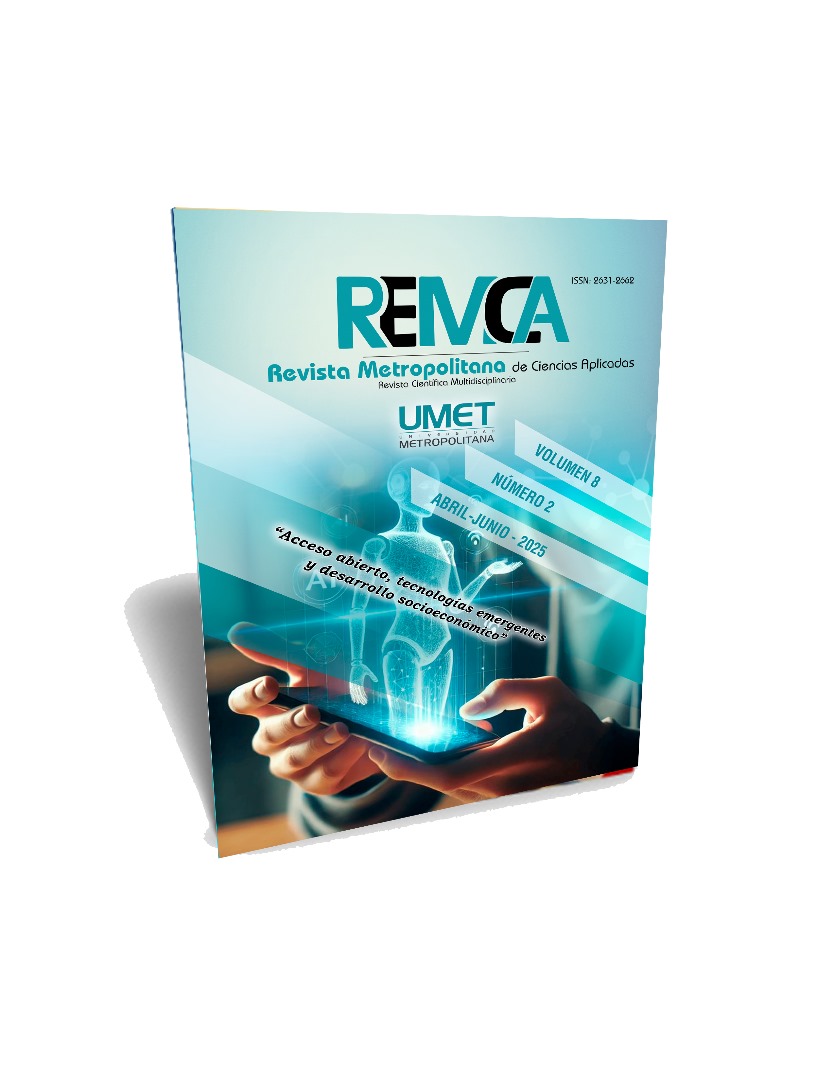Analysis of technological tools for teaching mathematics and their impact on student learning at CETIS91
DOI:
https://doi.org/10.62452/4asvb809Keywords:
Technological tools, mathematics teaching, student learningAbstract
In order to assess their influence on student learning, this article analyzes the technological resources utilized in mathematics instruction at Centro de Estudios Tecnológicos Industriales y de Servicios No. 91 (CETIS91). A mixed methodological approach is utilized to analyze the effects of different digital platforms, applications, and instructional software used in math classes on students' motivation, problem-solving abilities, and comprehension of important ideas. According to the findings, students' academic performance is greatly enhanced by the use of technologies like interactive simulators, software for solving mathematical problems, and online learning platforms, which encourage more dynamic and individualized learning. However, challenges related to the effective integration of these tools in the classroom are identified, such as lack of teacher training and limited access to technological resources in some cases. Finally, recommendations are proposed to optimize the implementation of these tools and maximize their potential in the teaching of mathematics at CETIS-91.
Downloads
References
Asqui Lema, B. O. (2024). Recursos educativos digitales para mejorar el aprendizaje en matemáticas. Esprint Investigación, 3(1), 59–72. https://doi.org/10.61347/ei.v3i1.67
Baker, R. S., & Inventado, P. S. (2014). Educational data mining: A review of the state of the art. Journal of Educational Data Mining, 6(1), 1-25. https://doi.org/10.1007/978-1-4614-3305-7_4
Cohen, R. (2011). Teaching Mathematics: A Handbook for Teachers. Academic Press.
Ertmer, P. A. (1999). Addressing freshman students’ perceived barriers to using computers in instruction. Computers in Human Behavior, 15(2), 173-192. doi: https://doi.org/10.1007/BF02299597
Fernández Sutta, F. U., Tejada Auccacusi, R., Galiano Campo, C., & Ccahua Valle, E. R. (2024). Uso de Tecnologías en matemática y su impacto en la enseñanza. Ciencia Latina Revista Científica Multidisciplinar, 8(4), 1004-1029. https://doi.org/10.37811/cl_rcm.v8i4.12341
Hattie, J. (2012). Visible Learning for Mathematics, Grades K-12. : Corwin.
Mayer, R. E. (2009). Multimedia learning (2nd ed.). Cambridge University Press.
Miller, H., & Thompson, P. (2019). Challenges and benefits of integrating technology in mathematics classrooms. Educational Technology & Society, 22(4), 65-75.
Orellana-Campoverde, J. A., & Erazo-Álvarez, J. C. (2021). Herramientas digitales para la enseñanza de Matemáticas en pandemia: Usos y aplicaciones de Docentes. Episteme Koinonia, 4(8), 109–128. https://doi.org/10.35381/e.k.v4i8.1348
Ripalda Asencio, V. J. (2024). El desarrollo del pensamiento lógico matemático en la Educación inicial. Ciencia Latina Revista Científica Multidisciplinar, 8(3), 6058-6068. https://doi.org/10.37811/cl_rcm.v8i3.11801
Stein, M. K., & Smith, M. S. (2011). Mathematical Thinking and Learning: A Review of the Literature. Routledge.
Verdezoto Estevez, K. S., Guambuguete Rea, D. W., Patín Ramos, P. P., & Barragán Velasco, M. J. (2024). Impacto de las herramientas informáticas en el aprendizaje de la Matemática en estudiantes de Educación General Básica. Reincisol., 3(6), 6126–6147. https://doi.org/10.59282/reincisol.V3(6)6126-6147
Downloads
Published
Issue
Section
License
Copyright (c) 2025 Maritza Librada Cáceres-Mesa, Patricia Ríos-Ramírez, María Guadalupe Veytia-Bucheli, Octaviano García-Robelo (Autor/a)

This work is licensed under a Creative Commons Attribution-NonCommercial-ShareAlike 4.0 International License.
Authors who publish in Revista Metropolitana de Ciencias Aplicadas (REMCA), agree to the following terms:
1. Copyright
Authors retain unrestricted copyright to their work. Authors grant the journal the right of first publication. To this end, they assign the journal non-exclusive exploitation rights (reproduction, distribution, public communication, and transformation). Authors may enter into additional agreements for the non-exclusive distribution of the version of the work published in the journal, provided that acknowledgment of its initial publication in this journal is given.
© The authors.
2. License
The articles are published in the journal under the Creative Commons Attribution-NonCommercial-ShareAlike 4.0 International License (CC BY-NC-SA 4.0). The terms can be found at: https://creativecommons.org/licenses/by-nc-sa/4.0/deed.en
This license allows:
- Sharing: Copying and redistributing the material in any medium or format.
- Adapting: Remixing, transforming, and building upon the material.
Under the following terms:
- Attribution: You must give appropriate credit, provide a link to the license, and indicate if any changes were made. You may do this in any reasonable manner, but not in any way that suggests the licensor endorses or sponsors your use.
- NonCommercial: You may not use the material for commercial purposes.
- ShareAlike: If you remix, transform, or build upon the material, you must distribute your creation under the same license as the original work.
There are no additional restrictions. You may not apply legal terms or technological measures that legally restrict others from doing anything the license permits.




